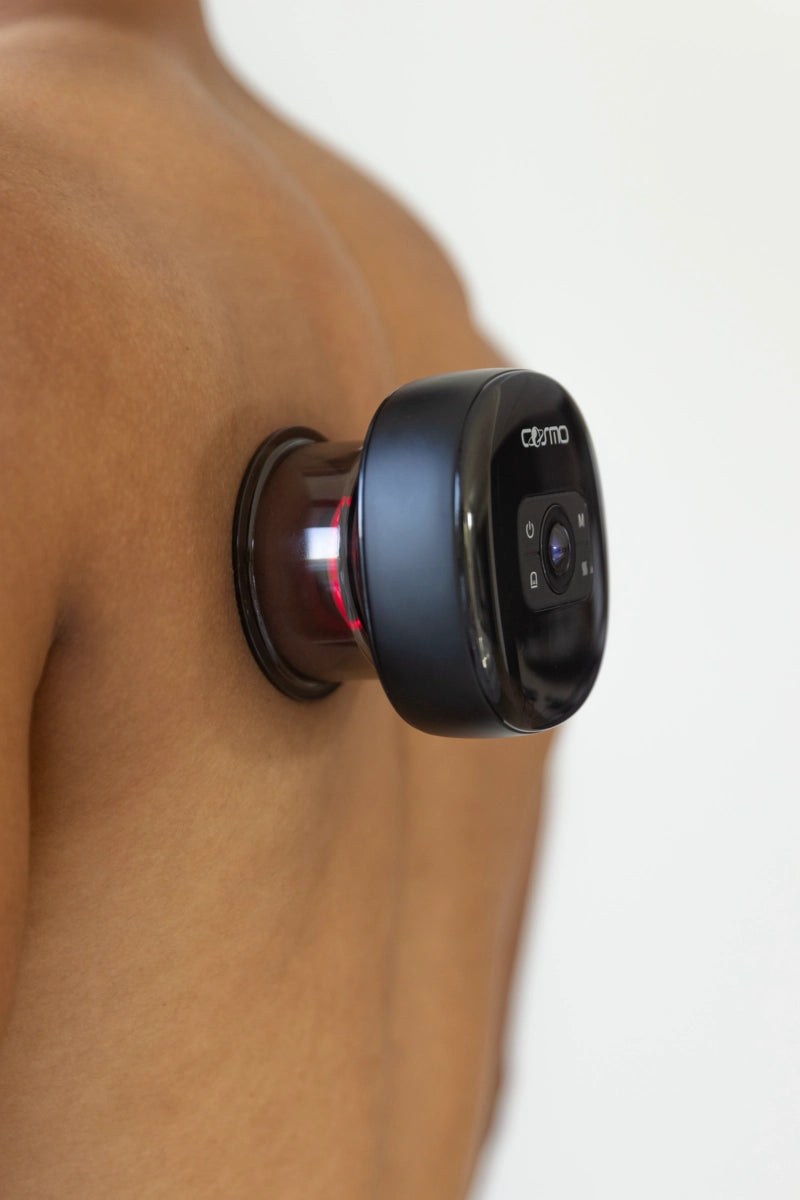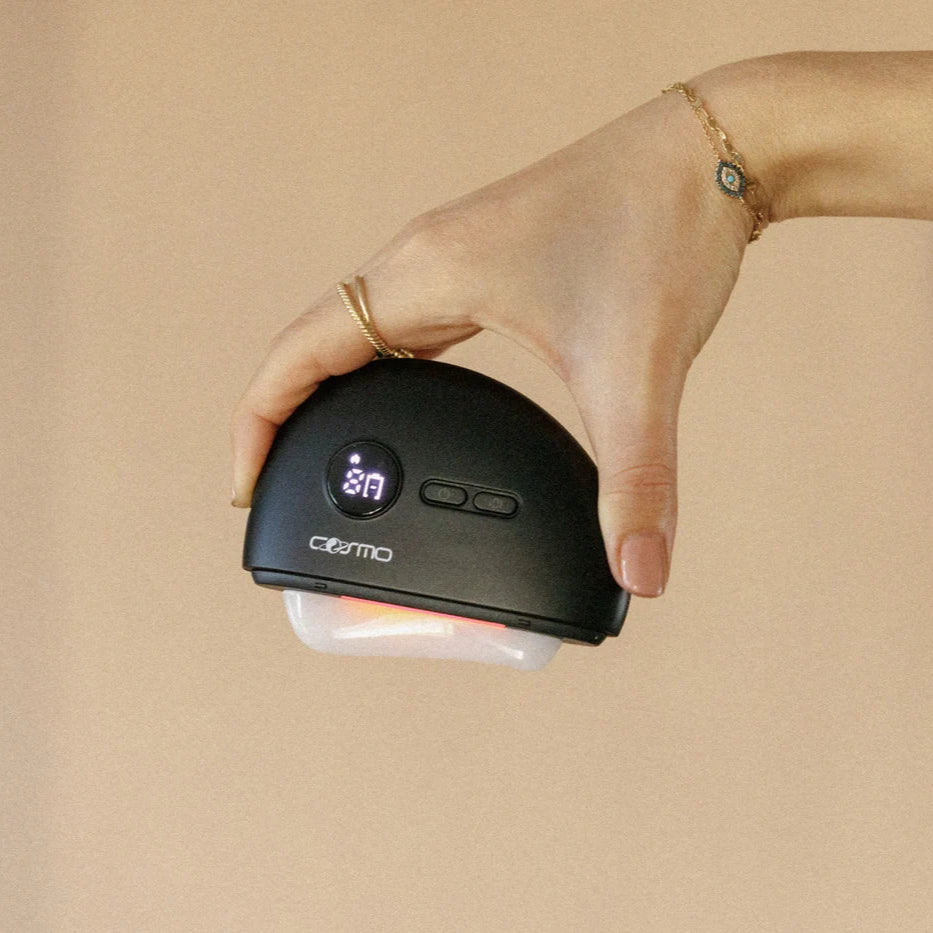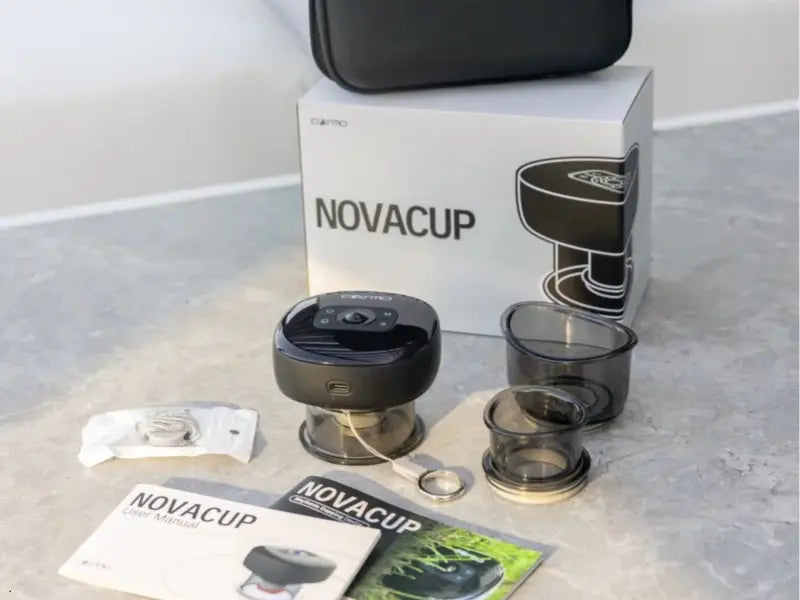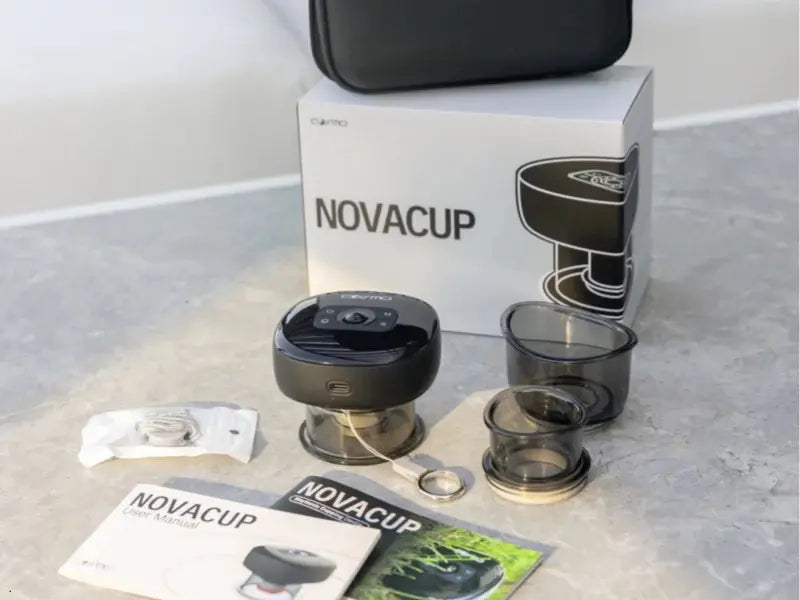Facial cupping has become a hot topic in skincare, with enthusiasts claiming everything from instant face-lifting effects to a radiant glow. Scroll through beauty forums or social media, and you’ll see people praising the facial cupping benefits, but what exactly is this treatment? It turns out this trend isn’t entirely new. In fact, facial cupping is rooted in traditional healing practices dating back centuries, having been used in ancient Egyptian, Chinese, and Middle Eastern cultures before evolving into a modern cosmetic technique. Today, it’s celebrated as a non-invasive face sculpting method that can potentially contour your features and revive your complexion, all without needles or surgery. If you’re curious about how cupping therapy for the face works and whether it lives up to the hype, read on. We’re about to dive into everything from contouring perks to circulation boosts.

What Is Facial Cupping and How Does It Work?
In simple terms, cupping therapy for the face involves placing small suction cups on the facial skin to create gentle vacuum pressure that lifts and massages the tissue. Think of it as a facial cupping massage; instead of using hands or rollers, you use specially designed cups to stimulate the skin. These cups are typically soft silicone or have rubber bulbs (sometimes glass), and they come in various sizes to target different areas. A standard facial cupping set usually includes a couple of larger cups for broad areas like the cheeks or forehead, and smaller ones for delicate spots around the eyes or mouth. During a session, you or a practitioner applies oil to help the facial cupping cups glide, then squeezes the cup to create suction and move it across the face in smooth strokes.
Unlike traditional body cupping (the kind that often leaves dark circle marks), facial cupping is done with much lighter suction. The goal isn’t to bruise or deeply draw blood to the surface, but rather to gently boost circulation and stimulate the skin. You’ll feel a light pulling or tugging; it should not be painful. In fact, when performed correctly, this technique shouldn’t leave bruises or telltale marks at all, making it far more subtle than the intense body version. As the cup moves, it lifts the skin and underlying fascia (connective tissue) slightly. This action increases blood flow to the area and causes a mild inflammatory response (don’t worry, it’s the good kind of inflammation that kick-starts healing). Essentially, the suction brings fresh blood and nutrients to the skin’s surface and may also cause the skin to release toxins or stagnant fluids. Many people find it relaxing too, a bit like a reverse massage. By the end of a proper facial cupping session, your face might feel warm and look temporarily flushed (thanks to the circulation boost), but it shouldn’t be painful or overly red. Now that we know what facial cupping is, let’s explore the specific benefits, from improving circulation to contouring your face.
Improved Circulation for a Radiant Glow
One of the most immediate effects of facial cupping is enhanced blood flow. The suction gently dilates capillaries and increases microcirculation under the skin. In fact, studies have shown that suction-based facial techniques can significantly boost blood circulation in the skin, improving skin tone and vibrancy. This rush of oxygen-rich blood helps improve facial circulation, delivering nutrients to your skin cells and whisking away waste products. If you’ve ever noticed how your face looks a bit dull or sallow, poor circulation might be a culprit, and this is where cupping can help.
With better blood flow comes that coveted “post-facial” glow. As circulation increases, your complexion may take on a rosier, more luminous appearance. Essentially, you’re feeding your skin from within. Improved circulation also supports faster cell turnover (your skin’s renewal process), which means old, tired skin cells get replaced by fresh ones more quickly. Over time, this could lead to a clearer and more even-toned complexion. People who regularly practice facial cupping often report that their skin looks brighter and more awake. Who doesn’t want skin that radiates health and vitality? Additionally, increased blood flow can help relax tight facial muscles (for example, in the jaw or between the brows), providing a dose of tension relief along with the glow. So, if your face is feeling and looking a bit “stagnant,” a little cupping massage might be just the circulation booster you need for a healthy blush.
Reduces Puffiness and Supports Lymphatic Drainage
Waking up with a puffy face or under-eye bags is something many of us can relate to. Facial cupping to the rescue! Many people specifically use facial cupping for puffiness, since the technique excels at moving along stagnant fluid that can accumulate and cause swelling. In essence, it acts like a gentle lymphatic face massage by stimulating the flow of lymph. The clear fluid in your body that carries away toxins and waste. This process provides a lymph drainage face effect (as beauty experts like to call it) similar to manual lymphatic drainage treatments you might get at a spa. By gliding the cups outward toward the lymph nodes (around your ears and down your neck), you encourage excess fluid to flush out of your face.
In fact, the mild suction from the cups actively promotes lymphatic drainage, which helps reduce facial swelling and inflammation. You’ll likely notice that any bloated, puffy areas (like under the eyes or in the cheeks) look slimmer and more contoured right after cupping. By draining excess fluids from your face, facial cupping can leave you with a more sculpted look and even a bit of a natural “V-shape” jawline definition. Many devotees swear by doing a quick cupping routine in the morning to depuff and get their face ready for the day. It’s essentially a DIY de-bloating treatment. Plus, as a bonus, clearing out that fluid can also help brighten your complexion; less stagnant fluid means better circulation and more glow (as covered in the previous section).
If you struggle with sinus congestion or tension that causes facial puffiness, you might find this helpful as well. Gently moving the lymph can relieve pressure, and some users report that facial cupping even helps relieve sinus stuffiness. The key is to always work the cups in an upward and outward motion, then down toward the lymph nodes in the neck, so that you’re guiding fluid to where it can be filtered out of your system. Take your time and use light pressure; you’ll be amazed at how a five-minute cupping routine can visibly slim and depuff a tired face. Regular sessions can alleviate chronic puffiness and give you a more refreshed, less puffy appearance each day.
Boosts Collagen Production and Firms the Skin
Beyond the short-term glow and depuffing, facial cupping may have exciting benefits for long-term skin quality, particularly when it comes to collagen, the protein that keeps skin firm and bouncy. The controlled suction essentially “tricks” your skin into thinking it’s been very mildly injured (through micro-tearing in the tissues), which triggers a repair response. As a result, your skin ramps up production of collagen and elastin fibers. According to experts, this gentle stimulation of cell repair and collagen production can help plump the skin and reduce the appearance of fine lines and wrinkles. In other words, you’re helping your skin help itself by activating its natural renewal processes.
Over time, with consistent practice, the anti-aging benefits of cupping the face can become noticeable. Fine lines may appear softer, and skin might feel firmer to the touch. Areas that were starting to sag (like nasolabial folds or the jawline) could look a bit tighter as new collagen firms them up from beneath. Of course, it’s not an overnight miracle; you won’t erase deep wrinkles with a few cupping sessions, but as a supportive therapy, it can complement your other skincare steps aimed at aging gracefully. Many people love that this is a non-invasive approach to skin rejuvenation: you’re not injecting anything or using harsh chemicals, just encouraging your face to rejuvenate naturally.
Another plus: by boosting collagen and improving elasticity, facial cupping can help fade the look of certain scars or textural irregularities over time. The increased blood flow and nutrients reaching the skin also nourish it from within, which is great for overall skin health. You might notice your complexion becoming smoother and “bouncier.” Keep in mind that consistency is key.
Doing a short session once a week or a few times a week is often recommended to maintain the effects. Also, be gentle: more suction or longer sessions won’t equate to more collagen; in fact, excessive cupping could cause bruising and counteract the benefits. Patience and a light touch will serve you well as your skin gradually becomes firmer and more radiant.
A Natural Face Contouring and Sculpting Tool
One reason facial cupping has so many fans is its ability to act as a face contouring tool, essentially helping to sculpt and define your features in a natural way. If you’re looking for a subtle lift in your face or more definition along your cheekbones or jawline, this technique might delight you. Regular facial cupping is even said to tone areas like the chin and jawline, giving a gentle contouring effect over time. As the suction boosts circulation and reduces puffiness (as discussed), your features can take on a more chiseled appearance, almost as if you had a very good night's sleep and woke up with a more toned face. It’s like an instant pick-me-up for your skin’s support structure.
The great thing is that this is non-invasive face sculpting. You’re not undergoing any procedure; it’s just a massage-like treatment. Because it helps with lymphatic drainage and muscle relaxation, you might notice that persistent bloating along the jaw (sometimes called “moon face”) diminishes. Also, by relaxing tight muscles (for example, the tense masseter muscles in the jaw), facial cupping can slightly slim the lower face for some people, similar to how Botox in the jaw is used to contour, but here we’re doing it through manual technique. When the facial muscles aren’t tense or swollen, your natural bone structure stands out more.
Facial cupping has joined the ranks of gua sha stones, jade rollers, and other trendy face contouring tools that beauty gurus use at home. Fans often incorporate all these tools together for maximum effect, for instance, doing a quick gua sha scrape after cupping to further sculpt the face. The principle is similar: improve circulation, reduce fluid retention, and you’ll reveal more definition. If you compare before-and-after photos of people who cup their face regularly, you might see subtle improvements like higher-looking cheekbones or a more V-shaped jaw. Of course, results vary from person to person, and it’s not going to change your bone structure. But as a way to enhance what you’ve got, facial cupping offers a nice boost. It’s essentially a workout for your face’s circulation and lymph system, resulting in a “naturally contoured” look when done routinely. Think of it as contouring without makeup, a way to let your facial features shine by reducing the distractions of puffiness and sagging.
At-Home Facial Cupping: Tools and Tips for Safe Practice
One of the best parts of facial cupping is that you can easily do it yourself once you learn the technique. There are plenty of kits available, so you can practice at-home facial cupping as part of your skincare routine. When shopping for the best tools for facial cupping, look for a facial cupping set that includes a few different cup sizes made of soft silicone (or sometimes glass). High-quality facial cupping cups are usually flexible, durable, and come in small and medium sizes designed specifically for the face’s contours. You can often order facial cupping tools online through retailers or marketplaces; they’re quite affordable and widely available. Just be sure to read reviews and perhaps avoid the absolute cheapest options, as you want cups that have smooth edges and good suction control to treat your skin gently.
Before you begin an at-home session, gather what you need: your set of cups, a mirror, and some sort of slip agent like a facial oil or a rich serum. The oil is important because it lets the cups glide without pulling harshly on your skin (never do cupping on a dry face, that’s a recipe for bruising!). Here’s a simple step-by-step guide for an effective facial cupping massage at home:
-
Start with a clean face: Wash your face with a gentle cleanser and pat dry. You want a clean canvas so that you’re not driving dirt or makeup into your pores during cupping.
-
Apply a light oil or serum: Spread a thin layer of facial oil or a slippery serum over your face. This provides the necessary slip. (Don’t skimp on this, it’s key to preventing friction and bruising.)
-
Choose the right cup: Select a small cup for smaller areas (around the eyes, lips, etc.) and a larger cup for broader areas (forehead, cheeks). Squeeze the cup, place it on your skin, then release to create a gentle suction. You should see your skin lift up into the cup just slightly.
-
Glide with care: Keeping the suction, glide the cup over your skin in one direction, usually upward and outward. For example, start at your chin and move along the jawline toward your ear. Or start beside your nose and slide out toward your temple. Always move in upward/outward strokes (think of “lifting” motions) rather than dragging downwards.
-
Keep the cup moving: Do not let the cup sit in one place for more than a couple of seconds. Continuously move it in your stroke direction, then release and re-suction on the next spot. This avoids any strong stagnant suction that could cause a bruise.
-
Follow a routine: Work section by section. Common sequence: jawline, then cheeks, then under-eye area (very gently with the smallest cup), then brow area, and finally forehead. You can also very lightly do the neck (sweeping downwards along the sides of the neck to encourage lymph flow).
-
Finish up: Once you’ve covered all areas (the whole process might take 5-10 minutes), gently wash off the oil if desired, or simply continue with the rest of your skincare. Many people like to apply their favorite serum or moisturizer right after cupping because they believe the increased circulation will help it absorb better. Indeed, facial cupping is said to enhance product absorption by improving blood flow to the skin’s surface.
As you practice, remember that with facial cupping, less is more. You’re aiming for light suction and smooth movement. Your face might turn a bit pink during the process. That’s normal and usually fades within an hour. However, you should not be seeing dark red or purple marks (if you do, you’re using too much suction or staying in one spot too long).
When it comes to safety, there are a few important tips. First, avoid any areas with active acne, open wounds, or skin irritations; you don’t want to aggravate those. Also, skip cupping entirely if you have a severe skin condition (like eczema flare-ups or rosacea) on your face, unless you’ve consulted a dermatologist. Always sanitize your cups after each use with soap and water to keep things hygienic. And perhaps most crucially, be gentle and patient with the process. Experts caution that improper technique, for instance, leaving a cup stationary on the skin for too long, can cause unwanted bruising in as little as five seconds. So, resist the urge to “pause” with the cup suctioned; instead, keep that cup moving. If you’re ever in doubt, you can consult a licensed esthetician or acupuncturist for guidance. Some people prefer to get a professional facial cupping session first to observe the technique, then replicate it at home. With practice, you’ll find the right pressure and pace that works for you. Done correctly, at-home facial cupping can be a safe, relaxing, and effective addition to your beauty routine.
The Bottom Line
Facial cupping is much more than just an Instagram wellness fad; it’s a modern revival of an age-old practice that offers a slew of potential perks for your skin. From our exploration above, you can see that the benefits of cupping the face range from improved circulation (hello, healthy glow!) and reduced puffiness, to possibly stimulating collagen for firmer skin and giving your features a bit of natural contour. It’s a holistic, non-invasive approach to skincare that can complement your other routines, whether you’re aiming for anti-aging effects or just a de-stressing ritual at the end of the day.
Keep in mind that results are often subtle and gradual. Think of facial cupping as a supportive therapy, a way to enhance your skin’s health and appearance over time, rather than an overnight transformation. Consistency and proper technique are key to seeing benefits and avoiding pitfalls like bruising. If you’re excited to give it a try, go ahead and grab a kit (or order facial cupping tools online for convenience) and set aside a few minutes for some self-care. Your first session might feel a little odd, but many people quickly grow to love the sensation and the visible post-cupping radiance. As always, listen to your skin: if something doesn’t feel right, adjust your approach or seek professional advice.

All in all, facial cupping provides a lymphatic and circulatory boost in one relaxing package. It’s fascinating how this ancient technique can be adapted into our at-home skincare routines today. Done properly, it can be a gentle way to sculpt your face, drain away puffiness, and nurture a healthy complexion. So, if you’re looking for a natural method to pamper your skin and maybe see a more contoured, glowing face in the mirror, facial cupping might be just the thing to try. Happy cupping, and may your skin shine bright!
Sources
-
BH Acuhealth Clinic – Facial Cupping Benefits: All You Need to Know About This Therapy Method (Oct 1, 2024) bhacu.combhacu.com
-
USAHS Blog – What Is Cupping Therapy? Benefits and Applications (May 20, 2024) usa.edu
-
Mighty River Wellness – Facial Cupping Benefits: All You Need to Know About This Therapy mightyriverwellness.commightyriverwellness.com
-
Healthline – Facial Cupping: How It Works, Benefits, Side Effects, and More (Medically reviewed 2018) healthline.comhealthline.com











